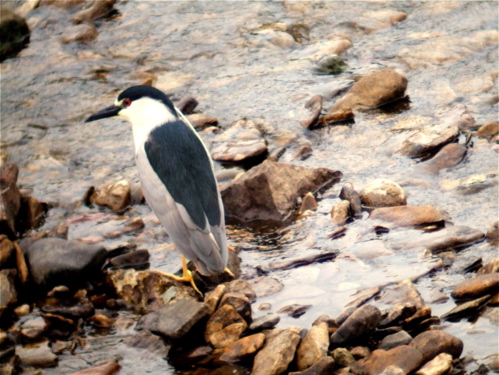Who knew this story would have such legs?!
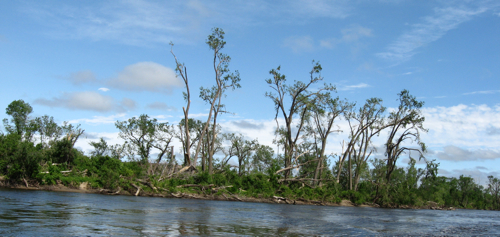
As reported last month, the great blue heron rookery at North Mississippi Regional Park was completely obliterated by a tornado that went through north Minneapolis. I worked with some of my fellow National Park Rangers at MNRRA, the MN DNR and the Animal Humane Society to help gather what few live chicks and injured adults were remaining on the island. We all pretty much guessed that it was late enough in the season that the herons would not rebuild. All last week, I received several emails about herons building new nests in two different locations with my the boundaries of my National Park!
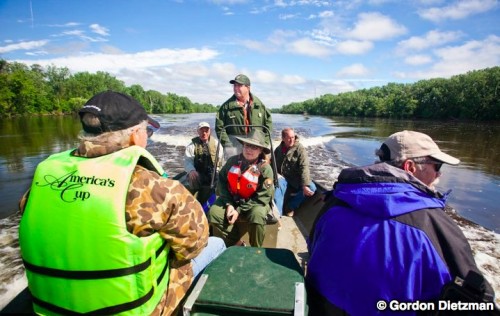
I organized a boat trip with my fellow park rangers, Carrol Henderson from the MN DNR, Bill Hudson and Brad Kopp from WCCO and Jim Williams from the Star Tribune to investigate. I was excited, I was able to get our park's head honcho Superintendent Paul Labovitz to be my river chauffeur for the morning! We passed the mangled rookery and even made a stop.
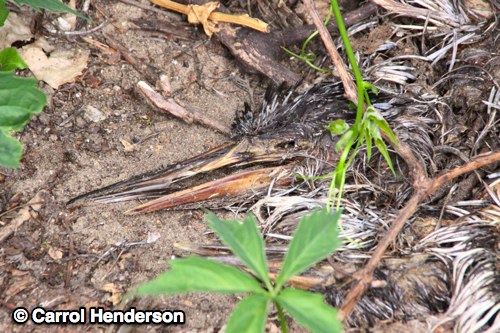
I was amazed at how few carcasses were left on the tornado ravaged island, we found very few compared to what was there a couple of days after the tornado. I'm sure turkey vultures and crows took advantage of the food source and based on some of the damaged feathers found around the few remaining bones, some mammalian predators ate them too, possibly raccoon or fox.
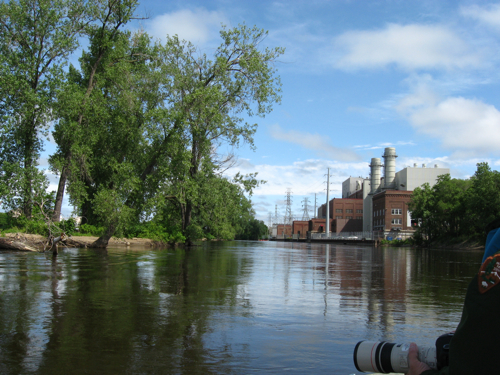
One of the reports of the herons rebuilding centered on islands just off of the Riverside Power Plant north of downtown Minneapolis. Even the power plant staff sent emails asking if they needed to do anything to help keep the herons safe--how cool is that?
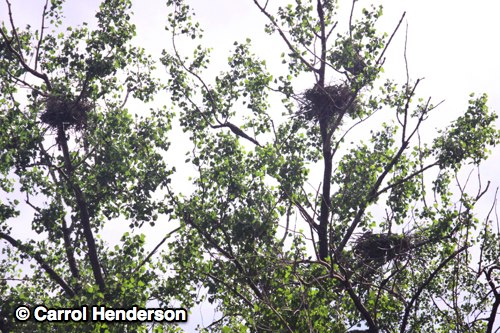
There are two small islands here and we found about two dozen nests. There could be more, but it's hard to count them among the leaves. They rebuilt quickly. Park Ranger Gordon (who took some of the photos in this post) looked at me and said, "You know, those birds were flying around with sticks when we went to the island two weeks ago. I didn't think they would seriously re-nest." I agreed.
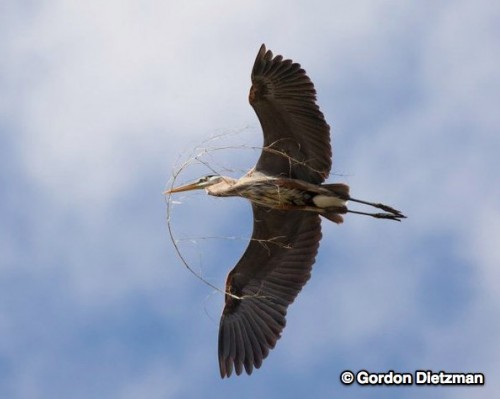
More herons came in with sticks while we circled the islands. I've observed herons adding sticks to nests with chicks during nesting season. I figured that they look like flimsy nests to begin with and additions are regularly added. When we saw the herons with sticks right after their nests were destroyed, I thought it was just an attempt, not serious nesting behavior--kind of like their hormones were telling them, "this is what you need to be doing now." But we watched more than one bird fly in with sticks while we checked the new rookery. I wondered if we would see any birds incubating.
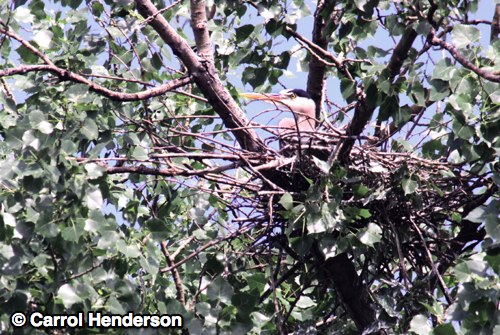
Sure enough, herons were incubating on this island! Wow! I was not expecting that. I'll be curious to see when the chicks fledge. It should be a three month process, but if we have a warm fall, these birds just might be successful.
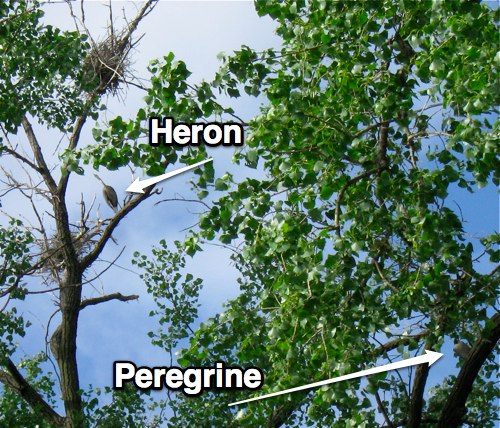
As we cruised under the trees on the boat, Paul asked, "What's that bird on the branch, it looks like a lump." Carrol, Gordon, Jim and I all about jumped out of our seats--it was an adult peregrine falcon perched below all of the heron nest.
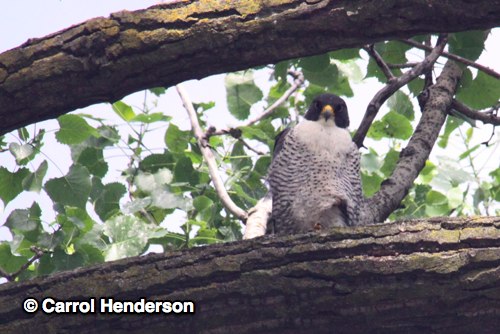
There's a peregrine falcon nest box right on the Riverside Power Plant. I thought our chances of seeing a peregrine falcon was very good, but I didn't expect one to be hanging out in the midst of a heron rookery. Great blue herons are not one of the preferred foods of this falcon. I don't think the herons see it as a serious threat. I had to give our park's superintendent some serious props for locating the falcon while all the birders in the boat missed it.
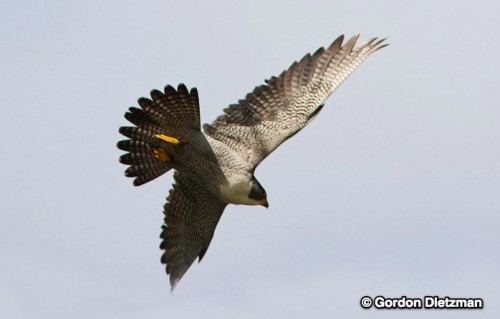
The falcon eventually flew over to its nest box but wow, what a bonus to see a peregrine mixed in with herons! This made me happy on so many levels--I love bird resiliency and I especially love when they do not read the same books and articles that I do and do their own thing. I'm also excited because we planned some canoe trips to view the old rookery this summer and I thought those would be bummer trips with me saying, "Well, we used to have a rookery here, but..."
This new little rookery is on that paddle route, so we'll be able to take people by the old tornado damaged island and the new one.
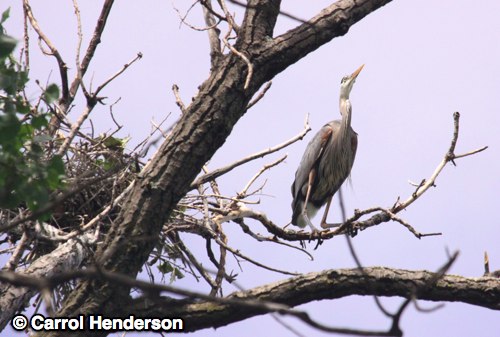
The one big bummer about this new rookery is that it is not easily viewable from either shore of the Mississippi River. Because of barge companies and power plant security, you can't view it like you could from North Mississippi Regional Park. However, not all of the herons relocated to this rookery. Some when to Coon Rapids Dam which is totally viewable from the eastern shore of the Mississippi River!
UPDATE! THIS ROOKERY IS VERY VISIBLE FROM THE EAST SIDE OF THE RIVER! YAY!

There's been a rookery there for years. What's interesting is that staff told me last year that the number of birds using the rookery was shrinking, the speculation being that the herons were using the old North Mississippi Regional Park rookery. But now, some have gone back to re-nest after the tornado. Most of the nests were covered up, but there were quite a few on the outer edges where birds could be seen incubating. If I really tried to focus my scope, I would make out nests deep in the leaves with chicks about five to six weeks old. You could certainly hear older heron chicks calling. A few years ago, I found a great horned owl nesting in this rookery, and no heron would nest next to it. I think the owls may have partaken of some heron chicks and that may have contributed to some leaving this rookery. Hopefully no owl will visit the nests on the outer edges of the this summer. At the very least, the owl nesting season should be over at this point.
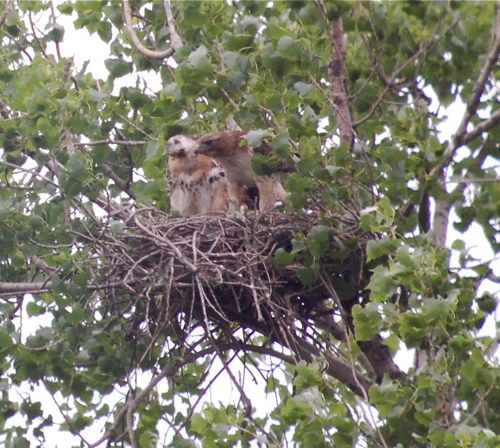
I did find a red-tailed hawk with two large chicks among the newer heron nests, another bonus raptor for the day! Herons aren't high on the red-tail's preferred prey list, so I don't think it will be an issue for the herons.
So, all in all a very hopeful outcome to a devastating loss. Bill and Brad did a very nice piece on the rookery, I was grateful they were interested in a follow up story. The resiliency of birds never ceases to amaze me. I'll post Jim's story when it comes up.



